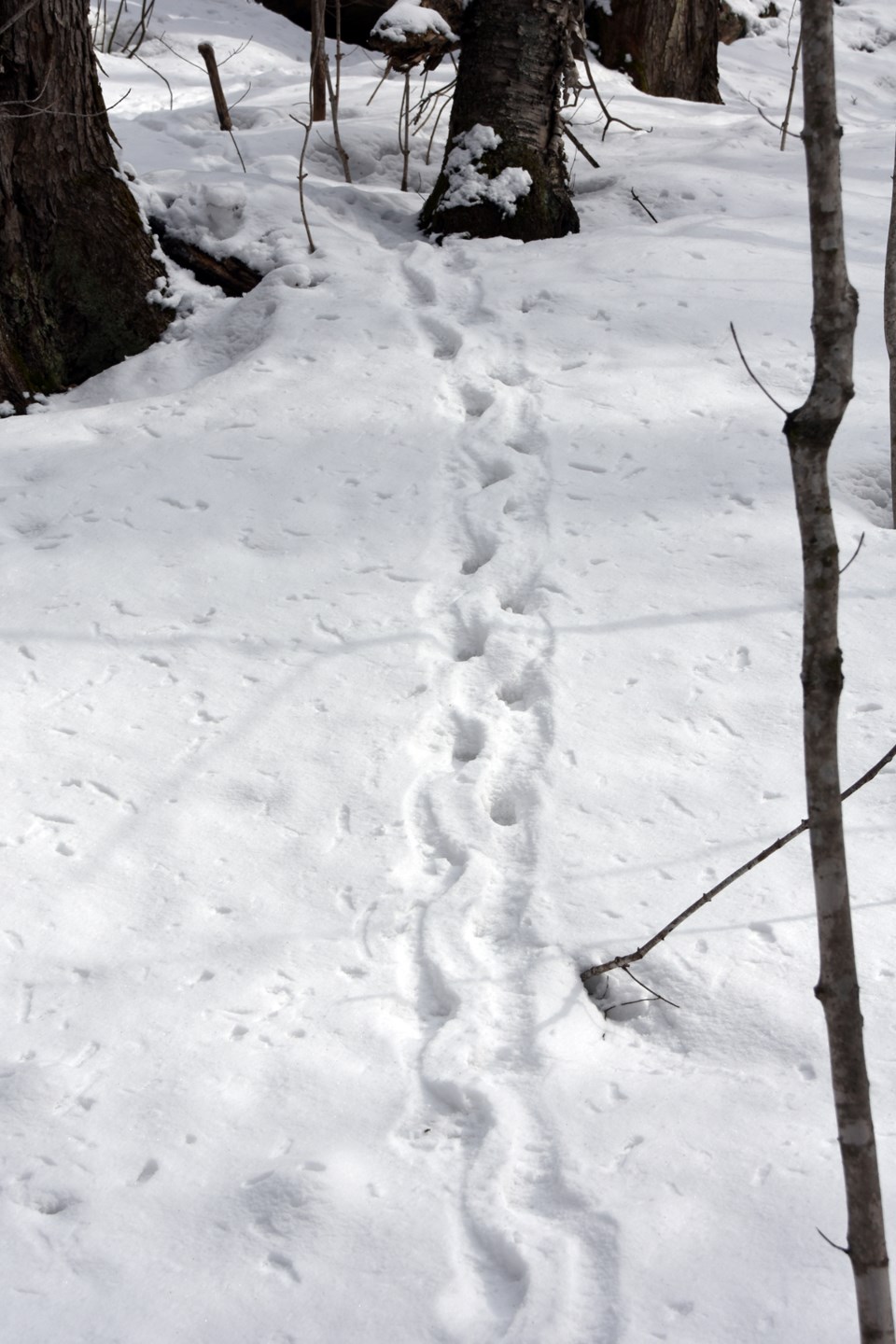Each winter, usually mid- to late March, there comes a time when the snow conditions are ideal for walking, just about anywhere, without the aid of snowshoes or skis. The earlier thaws have helped the accumulated snow to settle a bit, the interlocking flakes having melted and then refrozen as ice, creating a surface strong enough to support a person wearing just their size-11 boots.
This condition lasts for about a week, sometimes only days; too much warmth and the snow turns crumbly, too little freezing and the surface supports only those with four feet, and padded ones at that. But when the snow crystal phenomenon happens, well, get out and get walking!
We did the obligatory tobogganing in the farm field, a delight to be able to slide with a crushing roar down hills that have such a shallow incline that the toboggan usually has to be pulled down the slope. And that the others could run back to the top with their own saucers and sliders, unaided by dear ol' me, was a blessing in itself.
Last night a small amount of snow fell, which meant that by morning the yard and fields could be read like a book, such was the clarity and abundance of animal tracks. Mice, foxes, squirrels, coyotes and birds of several sizes had been active during the wee hours of the morning, and their signature track patterns were everywhere.
Around the feeder the collapsed tunnels of a meadow vole or shrew criss-crossed the yard in a random search pattern. The W-shaped black squirrel tracks mingle with the U-shaped ones left by their cousin, the red squirrel. The impressions of wing tips and feathered tails indicated where blue jays had slid in and blasted off in their quest for sunflower seeds.
Since the snow's crust was indeed quite firm, I decided to explore the back fields, to see what action may have been taking place with the wilder neighbours of the valley.
A lone trail of coyote tracks that wandered through the backyard indicated that the animal was just passing by, as the tracks showed that it had neither stopped nor gained speed. I followed them along the stream bank and then into the open field.
Once through the fence the coyote had travelled directly into the centre of the field, where a rather large snow drift had formed on the side of the gully. The drift had been there most of the winter, and is about five feet high and 30 feet long. The coyote went directly to the centre and had tried to climb the loosely packed overhang. It had collapsed but the scuffling of tracks indicated that the animal succeeded in getting to the top.
Instead of continuing on its way, the coyote's tracks then travelled along the overhang for a few feet, until it collapsed again, sending the animal sliding down to the bottom of the slope. It had bounded back up the drift and then completed its diagonal course until the far side of the field was reached.
Once over the next fence and into a pine plantation, the signs of animals were almost too thick to read. Coyotes going this-a-way, foxes going that-a-way, snowshoe hare highways emerging from thick pines to cross openings of poplar and sumac. Squirrels of both species stitched their tracks from pine plantation to maple tree fence line to cornfield and back again, several times.
A row of tiny 'peace symbols' were pressed into the snow, one almost on top of the other, where a ruffed grouse had tentatively left the shelter of the trees for the supply of corn in the open field. Something startled it (perhaps me) and the tracks were then spaced about seven inches apart as it dashed roadrunner style back to its haven.
The pine plantation where these critters reside has not been well tended, so the thick, interlocking growth of evergreen boughs creates a veritable fort for many prey species. The hare and the grouse have little to fear from owls, foxes or humans when nestled within this dense habitat.
However, openings will soon be appearing as a "herd of porcupines" seems to be intent on debarking as many trees as possible over the winter. Their low-slung bodies have grooved out pathways, which also appear and disappear throughout the greenery.
I return home via other fields, each revealing bits of mysteries and half-answers as to the ways of wildlife. Soon the snow will be too soft to support my weight, too wet for snowshoes and too deep for rubber boots. But while I can, I will travel upon this frozen carpet far and often, to new discoveries.
